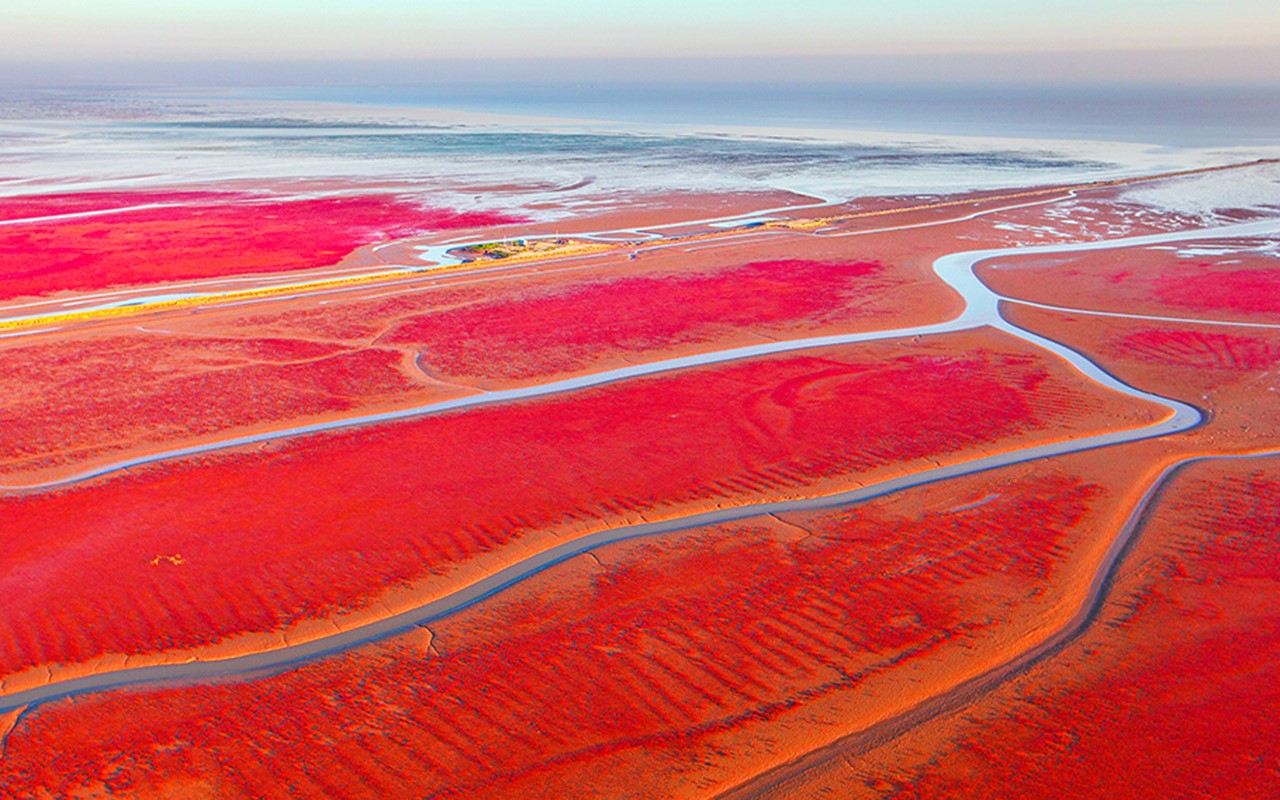Cordgrass invasion threatens the world’s most stunning saltmarshes
Shorebirds and tourism
The Red Beach salt marshes that adorn the north-eastern coastline of China could easily win any contest for the most beautiful marshes in the world, as the characteristic seepweed colours bright red in late summer to create a stunningly beautiful landscape. Yet, despite strong conservation efforts, the Red Beaches are under threat due to the invasion of cordgrass from the US.
“The Suaeda marshes are a prime habitat for many shorebirds and a critical stopover for millions of migratory waterbirds of the East Asian-Australasian Flyway, but are similarly a potential hotspot for the touristic economy because of their natural beauty”, says PhD-candidate Junlin Ren, who is currently working as a visiting PhD at the NIOZ Royal Netherlands Institute for Sea Research.
Studying satellite images to find ecosystem changes
Being given the status of Protected Area (PA) is one of the most important tools for conserving an area and its inhabitant species under threat. With the use of remote sensing based on satellite images, Ren analysed changes in seven of the largest, oldest, best-managed coastal wetland PAs in China, including multiple World Natural Heritage and Wetlands of International Importance sites, over a period of 40 years. Ren and the team of researchers revealed that, although these PAs successfully slowed down coastal wetland loss due to the significant reduction of human activity, this success is compromised by escalating plant invasions.
Thriving in a dynamic habitat
In the case of the Red Beach salt marshes, the seepweed Suaeda salsa is being replaced by the invasive cordgrass Spartina alterniflora from the United States of America. Spatial ecologist Johan van de Koppel, Ren’s supervisor at NIOZ explains how this was possible: “Sueada salsa is a species that thrives in a dynamic habitat. That is why it is more abundant in one year, and less abundant in the next. This has never been a problem, but with the presence of the cordgrass, it is a failing strategy.”
Faster invasion in protected areas
The team found that, although wetland reclamation was significantly slower in all PAs than in unprotected control sites, plant invasions were much higher in four of the invaded PAs, converting once critical shorebird habitats into massive dense, tallgrass meadows - green deserts - avoided by shorebirds.
Finding that species invasions are faster in protected areas than in unprotected control sites might be surprising to many ecologists and conservation biologists. According to Van de Koppel, it is an important find. “By preemptively occupying the mudflat and forming a naturally irreversible ‘invaded’ stable state, the competitively superior cordgrass completely takes over the native marsh community.”
International team
In this study, Ren was supported by an international supervising team under the leadership of professor Qiang He of Fudan University in Shanghai. Junlin Ren is currently continuing his work on the dynamics of the Red Beach marshes at NIOZ in Yerseke under the supervision of Johan van de Koppel.

Publication
Junlin Ren, … , Johan van de Koppel, … , Qiang He An invasive species erodes the performance of coastal wetland protected areas Science Advances, 13 October 2021,
DOI: 10.1126/sciadv.abi8943